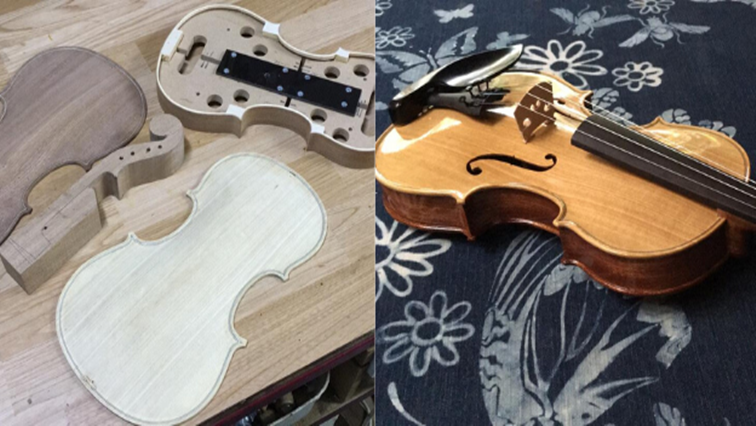Wood scientists at Stellenbosch University have crafted a second violin made out of indigenous African wood.
The violins form part of a wider research project which has been running since 2019.
These are the only two African violins in the world. The products of research seeking to understand the acoustic properties of indigenous wood species.
Video: Stellenbosch University wood scientists craft a second violin made out of indigenous African wood
To make an acoustically sound instrument, evenly grown wood with no density differences is needed. After searching woodyards for over a year, four species proved to have potential.
Stellenbonsch University, Department of Forest and Wood Science’s Professor Martina Meincken says, the violin is made from different wood across Africa.
“It mustn’t be too dense either, otherwise it becomes too heavy and it must allow the soundwave to travel at a reasonable speed. We need different properties for the front and the backside of the violin. So for the front, the best wood species were yellow wood and Knysna blackwood which is not very indigenous, but it grows for over 150 years in the indigenous forests around Knysna, so I included that and the best wood for the backsides was hard pear and sapele which is a West African wood,” says Meincken.
Violins are usually made from slow-growing wood -Spruce and Maple – imported from colder regions like Canada or the Italian Alps. The first African violin, made during the COVID-19 lockdown last year, was produced using Yellow Wood and West African Sapele.
Knysna Blackwood and Hard Pear were used for the second one.
Meincken says while the first violin has been varnished, the second has been treated with beeswax and turmeric.
“We have started to actually objectively investigate the difference in sound between the big, the first African violin and the commercial violin that has been made by the same luthier. This one is very strong in the lower register. It has very strong low sounds and the higher register is more or less comparable or its a bit softer. Its’ generally very loud, it can fill a room easily,” says Meincken.
The first instrument was made entirely by a professional with wood provided by Meincken, The second was made together with two wood science students who programmed the software for the Computerised Numerical Control cutting machine.
Four honours students have graduated, and four are currently assigned to perfect various accessories including the fingerboard, and chin rest.
While no more violins will be built, the sweet singing sound of these strings will forever be cherished.





